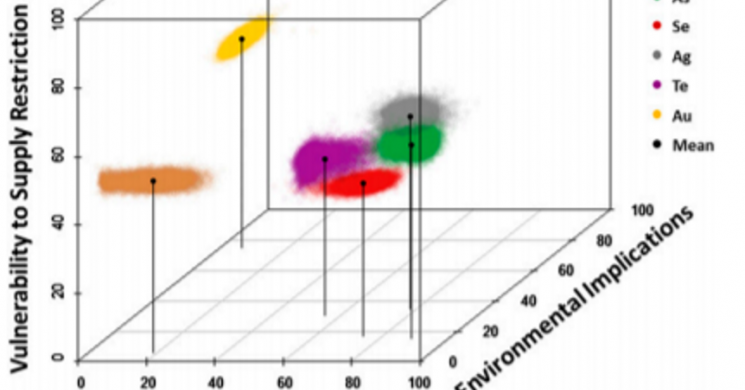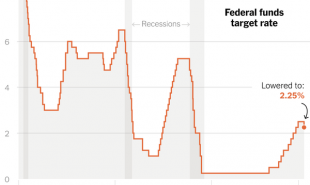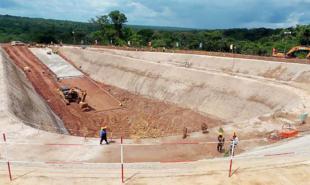
Factors Influencing Metal Use and Handicapping Future Trends
The application of Silver as an economical car heating element with side benefits has possibly opened up a whole new world of silver use in our eyes. Technology is disruptive, and it disrupted Silver out of photography. Now technology is making silver cost a smaller factor which enables its use on other areas.
So, is this a trend, or an aberration? Is Volkswagen merely throwing something out there to redirect from its more recent failed ideas? Does it even work? Will people pay for it? Is it sustainable given the supply of silver? These are some of the questions that must be answered before diving in and saying "Buy silver, short copper!". But how to answer these unknowns?
Look to the Scientist
Investment decisions are made under uncertain conditions. It is the scientist's aim to weigh the varying factors in deciding an optimal choice. For example, Silver is a better conductor than Copper. But Copper is favored for various reasons unrelated to its conductivity. Substitutability risks must be weighed. The pdf attached was given to us by a reader "Jimmy Gold" who posted a link. Admittedly, much of it, while not over our heads in small bites, was impossible for us to see in full integration in our first 3 passes. There is a lot going on here. Such is the price one pays for reading a non biased or spun article. You have to form your own opinion. The horror!! So we read the pdf...
What Did I Just Read?
As laymen and traders who love the science but new we were over our heads, we fell back on a broad tool to start to grasp what the author was saying. When an event happens or a trend is discerned possible, it is helpful to have a grid of factors that can influence an event. Those are the Economic, Technological, and Regulatory factors surrounding an event. These broad and simplified categories help us to assess better empirically if an event is a trend or an aberration. Most of what is in the attached report can be lumped into those categories.
Economic, Technological, and Regulatory Drivers
In the case of Silver being used in car windshields, we see the Technology catching up and driving the decision. Less silver is needed due to tech advances. Therefore Silver has the ability to be substituted for copper on its intrinsic merits. The Economics of the event are for the moment technologically driven. The Regulatory factor covers anything a government may do to facilitate or hinder repeat events. Things like subsidies, tariffs, ecological legislation are in this category. These must be looked for at all levels.Having this framework helps us get through heady serious documents like the one below.
All three categories ultimately boil down to money in a capitalist society. So these are one step less simpler than using cost as the determiner of event replication. These are cost drivers to the user of the metal.
Also, Gold and Silver are part of the Copper Group of Metals (CGM), not the other way around. This is much to our Precious-Centric dismay, and are seeking counseling on this.- Soren K.
A couple excerpts. emphasis ours
Criticality of Metals
A metal’s life cycle tells a great deal about the current situation but says nothing about possible changes in supply or demand at any point in the cycle. Those aspects can be addressed to at least some degree by studies of a metal’s criticality. This concept originated in 2006 when the US National Research Council (NRC) undertook a study to address the lack of understanding and of data on nonfuel minerals important to the US economy. The report (16) defined the criticality of minerals as a function of two variables: importance of uses and availability. The NRC committee carried out preliminary criticality analyses for several metals. Of those surveyed, a number were identified as critical: rhodium, platinum, manganese, niobium, indium, and the rare earths. Copper was not considered critical, not because of lack of importance but because supply risk was judged to be low. A number of other elements were located between these extremes. The evaluations were regarded as very preliminary but served to point out the potentially great differences in criticality among a number of the metals.
The results of the criticality study for a group of six elements commonly found in copper ores (copper, silver, gold, arsenic, selenium, and tellurium) is shown in Fig. 4, plotted in 3D criticality space. The best estimate for each metal is given by the central dot, with the “uncertainty cloud” generated by a Monte Carlo calculation in which the uncertainties of the various metrics are varied across their uncertainty ranges. An important realization is that the uncertainties are not significant enough to diminish the general level of conclusions that can be drawn from the diagram, on which several features stand out. First, the supply risk for some metals (arsenic, silver, tellurium) is much greater than for some others (copper, gold). Environmental implications also vary widely, from minimal for copper, selenium, and tellurium to significant for arsenic and high for gold. The high vulnerability to supply restriction for copper and gold reflects their very wide use in modern technology and, in the case of gold, the lower availability of its most viable substitute (i.e., silver). [EDIT- Availability does not mean supply. Silver's lower availability itself can be a function of indirect vectors, as it seems odd that Silver's availability is less than Gold's. Conclusion: more must be learned- Soren K.]The degree to which metals may be substituted and how available these substitutes are play an important role in determining each metal’s criticality

Substitution in Light of Possible Resource Constraints
The evaluations of criticality discussed above are contemporary snapshot assessments. A number of studies have attempted to look into the materials future, anticipating increasing demands on the supplies of one or more of the elements. Some of these investigations (4, 19) invoke the possibility of shortages. Others (20, 21) express more confidence in sustainable long-term supply. Because such factors as energy costs, technology transformations, and geopolitics are unpredictable, it is not possible to be certain as to the degree one should be concerned about possible resource constraints. However, a related question can be asked: what is the potential for substitution by something else if the supply of a given element becomes constrained?
PDF Here
www.pnas.org/content/112/20/6295.full.pdf
Read more by Soren K.Group







